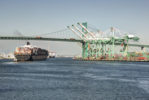
In the past year, a surprising number of natural disasters have devastated communities around the world. From the deadly earthquake and ensuing tsunami that rocked Indonesia, to the multiple hurricanes that have struck South America, to California’s raging wildfires, it seems that such disasters are becoming more and more commonplace.
Natural disasters aren’t a new phenomenon, but the rate at which they’re taking place isn’t going to let up unless proactive action is taken, according to a recent UN report. The data explored in the UN’s climate change report suggests that such disasters will continue to increase in their regularity unless more efforts are made to reduce greenhouse gas emissions.
Fortunately, with 194 nations committed to the Paris Agreement, we should begin to see and become part of concerted global efforts to combat climate change through government initiatives. All countries involved in the agreement intend to achieve this by accelerating greenhouse gas reduction. It’s a promising step, but as we have seen over the last 12 months, climate change is already having a disruptive effect on people, places and industry.
Escalating Supply Chain Risk
The tragic consequences that natural disasters can cause to human life is readily apparent, and covered extensively by the media. What’s less recognized is that natural disasters also wreak immense havoc on global supply chains, because they result in the cancellations of flights, the closure of ports, and the shutting down of highways. In this way, the delivery of raw materials, consumer goods and other components are delayed, sometimes substantially, which can seriously harm the bottom line of businesses.
For example, the catastrophic Tohoku earthquake and tsunami a few years ago resulted in a massive US$210bn in costs for Japan. Unable to import or export needed parts, Toyota, GM and Nissan all closed down their facilities temporarily in Japan and the United States. In a similar fashion, when Puerto Rico was struck by Hurricane Maria earlier this year, the supply chains of two of the island’s most important industries, pharmaceuticals and medical devices, were ground to a complete halt.
How, then, can your business protect itself from the risks of such overwhelming supply-chain disruptions? The key is to see them coming before the mainstream news media even start covering them.
The Relevance of Real-Time Data
How much more effective would your planning be if you could get real-time data to help you identify potential risks before they can cause havoc? Digitizing your supply-chain management processes can enable you to do just that.
A digital supply-chain management platform that monitors tens of thousands data sources in real time, including weather feeds, port closures, traffic congestion and the like can immediately inform users of where a supply-chain disruption may occur, and how that could affect their business.
When this data is displayed in an easy-to-understand graphical interface, you can quickly react and adjust if you know in real time that a storm at sea may affect trade lanes. You could ask yourself whether you have an order on any ships in those lanes, the priority of that cargo, and how you should adjust the shipping route.
To put it simply, context matters. The faster you’re made aware of “breaking news,” the faster you can address and mitigate potential issues. You’re proactive, not reactive.
In addition to extreme weather events, the right solution should provide data on a range of other potential supply-chain disruptions, such as political protests, transport strikes, economic upheaval or infrastructure damage, allowing you to foresee and minimize the damage that any external event can cause to your supply chain. Your chosen platform should be able to tell you today what is going to happen tomorrow.
Procuring Transparency
The more informed you are about what is going on regarding your business, the better you can make strategic data-led decisions that can help your business grow. You should invest in solutions that provide data on supply-chain disruptions, but you shouldn’t limit your knowledge only to that.
You should aim to achieve visibility and transparency into all elements of your supply chain, including the status of vendor bookings, purchase orders and the movement of inventory, using an automated system that updates data instantly, rather than relying on manual updates which are slow, error prone and out of date.
While natural disasters are inevitable, the impact on your organization doesn’t have to be, if you are prepared properly with the implementation of a digital supply-chain management platform.
Graham Parker is CEO of Gravity Supply Chain Solutions.






